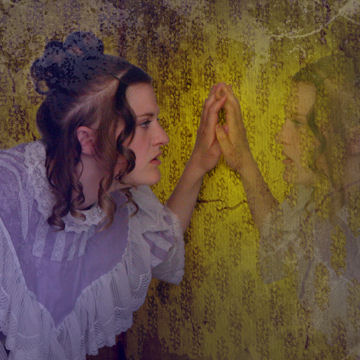Sunday, March 4, 2012
Elements of INsanity?
I have to admit that I have become fascinated with Gilman's "The Yellow Wall-paper," and when I re-read the story, I couldn't help but pay attention to the bigger elements at work in this story: Feminism and Psychology. There is definitely a strong sense of feminism present as the narrator--who I'm assuming to be John's wife, Jane--discusses that her husband and brother have forbidden her to write because of her illness, a request that has been secretly denied as Jane confines to the reader that she did "write for a while in spite of them" (1684). As the reader, I saw Jane's character to be a stronger woman than the men in the story gave her credit for, and she seemed to have a mind of her own, despite her later mental unraveling.
On the other hand, the psychological element at play in this story is the house itself...a very creepy concept. From the moment the reader is introduced into the story, the house takes on its own sinister, gothic appearance in its abandonment as it is described as being "alone, standing well back from the road. There are hedges and gates that lock" (1685). The narrator even wonders about the property saying, "There is something strange about this house--I can feel it" (1685). That line had me thinking about the supernatural in general, and about how some people in this world are more sensitive to supernatural energy and entities than other people. Jane chalks it up to her illness, but perhaps the answer is simple: If there is a demonic presence or some ghostly entity, Jane must be more sensitive to the activity than anyone else in the house. Nevertheless, the appearance of the house and the structure of the upstairs bedroom made me think about movies like Amityville Horror and The Shining.
Now take those two elements of Feminism and Psychology and combine them, and that creates one interesting and creepy story guaranteed to last generations. Just the fact that the story is written in journal form without dates, makes it more personal and close to the reader. By the end of the story, the reader has witnessed Jane unravel and become obsessed with who or what is behind the wallpaper, that perhaps the reader begins to suspect that maybe someone or something is behind the wallpaper and Jane is not entirely crazy. I honestly thought that when Jane picked up the rope and threw the key out of the window, that she was finally going to snap and kill herself--which would have been an interesting scene since the author herself committed suicide. The entire story is all a game of sanity vs. insanity, and who is the reader to believe? Is there really a woman in the yellow wallpaper, or is Jane simply insane?
Subscribe to:
Post Comments (Atom)

No comments:
Post a Comment